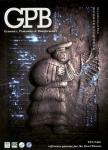Expression Profiling and Structural Characterization of Micro RNAs in Adipose Tissues of Hibernating Ground Squirrels
Expression Profiling and Structural Characterization of Micro RNAs in Adipose Tissues of Hibernating Ground Squirrels作者机构:Department of BiologyCarleton University Biochemistry DepartmentSchulich School of Medicine and DentistryWestern University
出 版 物:《Genomics, Proteomics & Bioinformatics》 (基因组蛋白质组与生物信息学报(英文版))
年 卷 期:2014年第12卷第6期
页 面:284-291页
核心收录:
学科分类:07[理学] 08[工学] 09[农学] 071007[理学-遗传学] 090102[农学-作物遗传育种] 0710[理学-生物学] 1001[医学-基础医学(可授医学、理学学位)] 0714[理学-统计学(可授理学、经济学学位)] 0703[理学-化学] 0901[农学-作物学] 0836[工学-生物工程] 0701[理学-数学] 0812[工学-计算机科学与技术(可授工学、理学学位)]
基 金:supported by a Discovery grant from the Natural Sciences and Engineering Research Council (NSERC) of Canada (Grant No. 6793) supported by the NSERC postgraduate fellowships
主 题:Non-coding RNA Dicer Ground squirrel Stress adaptation Hypometabolism
摘 要:Micro RNAs(mi RNAs) are small non-coding RNAs that are important in regulating metabolic stress. In this study, we determined the expression and structural characteristics of 20 mi RNAs in brown(BAT) and white adipose tissue(WAT) during torpor in thirteen-lined ground squirrels. Using a modified stem-loop technique, we found that during torpor, expression of six mi RNAs including let-7a, let-7b, mi R-107, mi R-150, mi R-222 and mi R-31 was significantly downregulated in WAT(P 〈 0.05), which was 16%–54% of euthermic non-torpid control squirrels,whereas expression of three mi RNAs including mi R-143, mi R-200 a and mi R-519 d was found to be upregulated by 1.32–2.34-fold. Similarly, expression of more mi RNAs was downregulated in BAT during torpor. We detected reduced expression of 6 mi RNAs including mi R-103 a, mi R-107, mi R-125 b, mi R-21, mi R-221 and mi R-31(48%–70% of control), while only expression of mi R-138 was significantly upregulated(2.91 ± 0.8-fold of the control, P 〈 0.05). Interestingly,mi RNAs found to be downregulated in WAT during torpor were similar to those dysregulated in obese humans for increased adipogenesis, whereas mi RNAs with altered expression in BAT during torpor were linked to mitochondrial b-oxidation. mi RPath target prediction analysis showed that mi RNAs downregulated in both WAT and BAT were associated with the regulation of mitogen-activated protein kinase(MAPK) signaling, while the mi RNAs upregulated in WAT were linked to transforming growth factor b(TGFb) signaling. Compared to mouse sequences, no unique nucleotide substitutions within the stem-loop region were discovered for the associated pre-mi RNAs for the mi RNAs used in this study, suggesting no structure-influenced changes in pre-mi RNA processing efficiency in the squirrel. As well, the expression of mi RNA processingenzyme Dicer remained unchanged in both tissues during torpor. Overall, our findings suggest that changes of mi RNA expression in adipose tissues may be l



